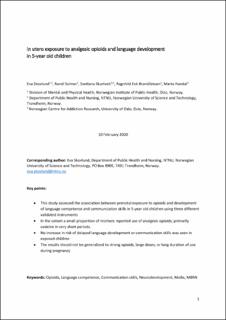| dc.description.abstract | Purpose
A pervasive problem in registry-based pharmacoepidemiological studies is what exposure duration to assign to individual prescriptions. The parametric waiting time distribution (WTD) has been proposed as a method to estimate such durations. However, when prescription durations vary due to seasonal stockpiling, WTD estimates will vary with choice of index date. To counter this, we propose using random index dates.
Methods
Within a calendar period of a given length, δ, we randomly sample individual index dates. We include the last prescription redemption prior to the index date in the analysis. Only redemptions within distance δ of the index date are included. In a simulation study with varying types and degrees of stockpiling at the end of the year, we investigated bias and precision of the reverse WTD with fixed and random index dates, respectively. In addition, we applied the new method to estimate durations of Norwegian warfarin prescriptions in 2014.
Results
In simulation settings with stockpiling, the reverse WTD with random index dates had low relative biases (−0.65% to 6.64%) and high coverage probabilities (92.0% to 95.3%), although when stockpiling was pronounced, coverage probabilities decreased (2.7% to 85.8%). Using a fixed index date was inferior. The estimated duration of warfarin prescriptions in Norway using random index dates was 131 (130; 132) days.
Conclusions
In the presence of seasonal stockpiling, the WTD with random index dates provides estimates of prescription durations, which are more stable, less biased and with better coverage when compared to using a fixed index date. | en_US |
